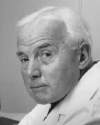
Born 25 Feb 1924.
English molecular biologist whose study (with Jean Hanson) of muscle ultrastructure using the techniques of X-ray diffraction and electron microscopy led him to propose the sliding-filament theory of muscle contraction. An explanation for the conversion of chemical energy to mechanical energy on the molecular level, the theory states that two intertwined muscle proteins, actin and myosin, arranged in partially overlapping filaments, slide past each other through the activity of the energy-rich compound adenosine triphosphate (atp), during muscle contraction.
English molecular biologist whose study (with Jean Hanson) of muscle ultrastructure using the techniques of X-ray diffraction and electron microscopy led him to propose the sliding-filament theory of muscle contraction. An explanation for the conversion of chemical energy to mechanical energy on the molecular level, the theory states that two intertwined muscle proteins, actin and myosin, arranged in partially overlapping filaments, slide past each other through the activity of the energy-rich compound adenosine triphosphate (atp), during muscle contraction.

Tokamak T-3
Born 25 Feb 1909; died 1 Mar 1973 at age 64.
Lev Andreevich Artsimovich was a Soviet physicist who provided the basis of the Tokamak, a device capable of confining ultra-high temperature plasma suitable for research into controlled nuclear fusion. After WW II, he began with the task of isotope separation for nuclear bomb fuel, and from there turned to work on a goal of controlled nuclear fusion.
Lev Andreevich Artsimovich was a Soviet physicist who provided the basis of the Tokamak, a device capable of confining ultra-high temperature plasma suitable for research into controlled nuclear fusion. After WW II, he began with the task of isotope separation for nuclear bomb fuel, and from there turned to work on a goal of controlled nuclear fusion.
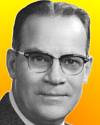
Born 25 Feb 1904; died 14 Dec 1961 at age 57.
John J(oseph) Bittner was an American geneticist who isolated a "Bittner milk factor" (1949) from the milk of certain mice, which strongly suggested that at least some viruses can cause cancer. Using carefully bred strains of mice, he compared the role of the mother's genetic disposition to be either prone to cancer or resistant. By having the mice of one disposition act as foster mothers and nurse the babies of the other disposition, he showed that cancer-prone young could grow to be cancer resistant. The opposite was also true: babies originally cancer-resistant became cancer prone. He published this observation (1936), and went on to isolate particles of a virus-like size from the milk of cancer-prone mice that were not present in the milk of cancer-resistant mice.
John J(oseph) Bittner was an American geneticist who isolated a "Bittner milk factor" (1949) from the milk of certain mice, which strongly suggested that at least some viruses can cause cancer. Using carefully bred strains of mice, he compared the role of the mother's genetic disposition to be either prone to cancer or resistant. By having the mice of one disposition act as foster mothers and nurse the babies of the other disposition, he showed that cancer-prone young could grow to be cancer resistant. The opposite was also true: babies originally cancer-resistant became cancer prone. He published this observation (1936), and went on to isolate particles of a virus-like size from the milk of cancer-prone mice that were not present in the milk of cancer-resistant mice.
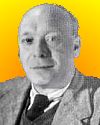
Born 25 Feb 1898; died 4 Jun 1961 at age 63. quotes
English physical biochemist who was the first to make use of X-ray diffraction patterns to study the structure of nucleic acids (1937). Astbury researched the method under Bragg for seven years, then investigated the structure of wool in both the stretched and unstretched forms. From the difference in the diffraction patterns, he began to try to work ot the structure of protein molecules. His preliminary determination of the structure of nucleic acids were, in fact, wrong - but it gave impetus to Pauling's work with proteins, and to Crick and Watson's study of DNA structure. His work, slowly decoding the nature of molecular structure of virtually the largest organic materials, fibrous and globular proteins, was valuable to both science and industry.
English physical biochemist who was the first to make use of X-ray diffraction patterns to study the structure of nucleic acids (1937). Astbury researched the method under Bragg for seven years, then investigated the structure of wool in both the stretched and unstretched forms. From the difference in the diffraction patterns, he began to try to work ot the structure of protein molecules. His preliminary determination of the structure of nucleic acids were, in fact, wrong - but it gave impetus to Pauling's work with proteins, and to Crick and Watson's study of DNA structure. His work, slowly decoding the nature of molecular structure of virtually the largest organic materials, fibrous and globular proteins, was valuable to both science and industry.
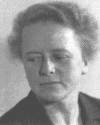
Born 25 Feb 1896; died 1979.
German chemist who co-discovered (1925) element 75, rhenium, which they named after the Rhine River. They found trace amounts in the mineral columbite. She was working with Walter Noddack, her future husband (1926). They were also trying to find element 43, which they called masurium, but announcement of that find was mistaken. She commented on the possibility of fission upon hearing the reports of Fermi's 1934 observations of the neutron bombardment of uranium. Her idea remained dormant. However, when Frisch, five years afterwards, presented the same idea, it became accepted. In photochemistry, the Noddacks worked on sensitizing coloring substances, the photochemistry of the human eye and other subjects.
German chemist who co-discovered (1925) element 75, rhenium, which they named after the Rhine River. They found trace amounts in the mineral columbite. She was working with Walter Noddack, her future husband (1926). They were also trying to find element 43, which they called masurium, but announcement of that find was mistaken. She commented on the possibility of fission upon hearing the reports of Fermi's 1934 observations of the neutron bombardment of uranium. Her idea remained dormant. However, when Frisch, five years afterwards, presented the same idea, it became accepted. In photochemistry, the Noddacks worked on sensitizing coloring substances, the photochemistry of the human eye and other subjects.
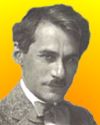
Born 25 Feb 1869; died 6 Sep 1940 at age 71.
Phoebus Aaron Theodor Levene was a Russian-American chemist who was a pioneer in the study of nucleic acids. In 1909, he found that the carbohydrate present in nucleic acid from yeast is the pentose sugar ribose. In 1929, he succeeded in identifying the carbohydrate in the nucleic acid from the thymus of an animal. It is also a pentose sugar but lacks one oxygen atom of ribose and was therefore called deoxyribose. These were named ribonucleic and deoxyribonucleic acids (RNA and DNA). Levene also determined how the nucleic acid components combine to form the nucleotides and how the nucleotides combine in chains. Later discoveries showed DNA and RNA to be key elements in the maintenance of life.
Phoebus Aaron Theodor Levene was a Russian-American chemist who was a pioneer in the study of nucleic acids. In 1909, he found that the carbohydrate present in nucleic acid from yeast is the pentose sugar ribose. In 1929, he succeeded in identifying the carbohydrate in the nucleic acid from the thymus of an animal. It is also a pentose sugar but lacks one oxygen atom of ribose and was therefore called deoxyribose. These were named ribonucleic and deoxyribonucleic acids (RNA and DNA). Levene also determined how the nucleic acid components combine to form the nucleotides and how the nucleotides combine in chains. Later discoveries showed DNA and RNA to be key elements in the maintenance of life.
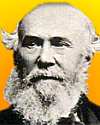
Born 25 Feb 1822; died 30 Oct 1880 at age 58.
English railway engineer who was knighted for building the Tay Railway Bridge that afterwards collapsed in a fierce gale on 28 Dec 1879 killing a trainload of people. His railway engineering career began at age 17. By 1849, he was Engineer and Manager of the Edinburgh and Northern Railway. Realising the value of a bridge to replace ferries across the mile-wide Firth of Tay on the east Scottish coast, he spent 20 years promoting such a project before it was approved. The foundation stone was laid on 22 Jul 1871. The two-mile bridge of lattice girders on ironwork columns was opened 31 May 1878, but failed the next year. He died four months after the Court of Inquiry held him responsible for poor design against wind pressure.«
English railway engineer who was knighted for building the Tay Railway Bridge that afterwards collapsed in a fierce gale on 28 Dec 1879 killing a trainload of people. His railway engineering career began at age 17. By 1849, he was Engineer and Manager of the Edinburgh and Northern Railway. Realising the value of a bridge to replace ferries across the mile-wide Firth of Tay on the east Scottish coast, he spent 20 years promoting such a project before it was approved. The foundation stone was laid on 22 Jul 1871. The two-mile bridge of lattice girders on ironwork columns was opened 31 May 1878, but failed the next year. He died four months after the Court of Inquiry held him responsible for poor design against wind pressure.«
Thomas Bouch: The Builder of the Tay Bridge, by John Rapley. - book suggestion.
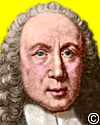
Born 25 Feb 1682; died 5 Dec 1771 at age 89. quotes
Italian anatomist and pathologist whose works helped make anatomy an exact science. His early studies of particularly the throat, and the sinus and hydatid of Morgagni in this region perpetuate his name. Morgagni wrote his major work De sedibus et causis morborum per anatomen indigatis ("On the Seats and Causes of Disease," Venice, 1771, trans. French, English, and German) which laid the foundation of modern pathology. He thought tuberculosis contagious and refused to make autopsies on tuberculous subjects; his teaching led to laws requiring upon the death of tuberculosis patients that their rooms be disinfected and their clothing burned. For cancer, Morgagni insisted that the knife was the only remedy that gave fruitful results. more
Italian anatomist and pathologist whose works helped make anatomy an exact science. His early studies of particularly the throat, and the sinus and hydatid of Morgagni in this region perpetuate his name. Morgagni wrote his major work De sedibus et causis morborum per anatomen indigatis ("On the Seats and Causes of Disease," Venice, 1771, trans. French, English, and German) which laid the foundation of modern pathology. He thought tuberculosis contagious and refused to make autopsies on tuberculous subjects; his teaching led to laws requiring upon the death of tuberculosis patients that their rooms be disinfected and their clothing burned. For cancer, Morgagni insisted that the knife was the only remedy that gave fruitful results. more
Doctors: The Biography of Medicine, by Sherwin B. Nuland. - book suggestion.
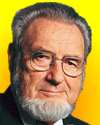
Died 25 Feb 2013 at age 96 (born 14 Oct 1916). quotes
Charles Everett Koop was an American public health officer and pediatric surgeon who conscientiously served his country as the 13th U.S. Surgeon-General from 1982-1989. He set aside his personal views and scrupulously followed science in his recommendations for public health. Before taking the position at age 66, he had a career as a pediatric surgeon. He found ways to treat a range of challenging birth defects. He is respected as the most influential surgeon general in U.S. history. He sternly informed the public of the dangers of smoking, and took a leading role in shaping attitudes against tobacco. In his term, smoking dropped notably. Koop was also effective in pushing the government into giving increased attention to AIDS, which was emerging at this time.«
Charles Everett Koop was an American public health officer and pediatric surgeon who conscientiously served his country as the 13th U.S. Surgeon-General from 1982-1989. He set aside his personal views and scrupulously followed science in his recommendations for public health. Before taking the position at age 66, he had a career as a pediatric surgeon. He found ways to treat a range of challenging birth defects. He is respected as the most influential surgeon general in U.S. history. He sternly informed the public of the dangers of smoking, and took a leading role in shaping attitudes against tobacco. In his term, smoking dropped notably. Koop was also effective in pushing the government into giving increased attention to AIDS, which was emerging at this time.«
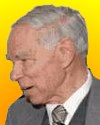
Died 25 Feb 1999 at age 86 (born 19 Apr 1912). quotes
American nuclear chemist. During 1940-58, Seaborg and his colleagues at the University of California, Berkeley, produced nine of the transuranic elements (plutonium to nobelium) by bombarding uranium and other elements with nuclei in a cyclotron. He coined the term actinide for the elements in this series. The work on elements was directly relevant to the WW II effort to develop an atomic bomb. It is said that he was influential in determining the choice of plutonium rather than uranium in the first atomic-bomb experiments. Seaborg and his early collaborator Edwin McMillan shared the 1951 Nobel Prize for chemistry. Seaborg was chairman of the US Atomic Energy Commission 1962-71. Element 106, seaborgium (1974), was named in his honour.
American nuclear chemist. During 1940-58, Seaborg and his colleagues at the University of California, Berkeley, produced nine of the transuranic elements (plutonium to nobelium) by bombarding uranium and other elements with nuclei in a cyclotron. He coined the term actinide for the elements in this series. The work on elements was directly relevant to the WW II effort to develop an atomic bomb. It is said that he was influential in determining the choice of plutonium rather than uranium in the first atomic-bomb experiments. Seaborg and his early collaborator Edwin McMillan shared the 1951 Nobel Prize for chemistry. Seaborg was chairman of the US Atomic Energy Commission 1962-71. Element 106, seaborgium (1974), was named in his honour.
Adventures in the Atomic Age: From Watts to Washington, by Glenn T. Seaborg. - book suggestion.
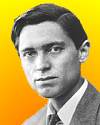
Died 25 Feb 1971 at age 86 (born 30 Aug 1884).
Swedish chemist who won the 1926 Nobel Prize for Chemistry for his study of the chemistry of colloids and his invention of an ultracentrifuge (1923) as a technique for investigating the molecular weights of very large molecules. He showed that the molecular weights of proteins were much higher than originally thought (haemoglobin, for example, has a molecular weight of about 68,000). Since weight measurements repeatedly gave the same values, which implies that the particles had a definite size and composition, Svedberg thus disproved Wilhelm Ostwald's model of irregular assemblies of smaller molecules. Svedberg also contributed to development of the cyclotron and the the electrophoresis process of chemical analysis.« more
Swedish chemist who won the 1926 Nobel Prize for Chemistry for his study of the chemistry of colloids and his invention of an ultracentrifuge (1923) as a technique for investigating the molecular weights of very large molecules. He showed that the molecular weights of proteins were much higher than originally thought (haemoglobin, for example, has a molecular weight of about 68,000). Since weight measurements repeatedly gave the same values, which implies that the particles had a definite size and composition, Svedberg thus disproved Wilhelm Ostwald's model of irregular assemblies of smaller molecules. Svedberg also contributed to development of the cyclotron and the the electrophoresis process of chemical analysis.« more
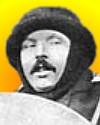
1909
Died 25 Feb 1964 at age 86 (born 21 Mar 1877).
Maurice Alain Farman was a French aircraft designer and aircraft manufacturer who contributed greatly to early aviation. In 1908, with his brother Henri Farman, he made the first circular flight of over 1-km, completing a 1.6-km (one-mile) flight near Paris. They built a plane the following year and flew a record distance of 160 km (100 miles). Four years after that, the two brothers started their own aviation company at Boulogne-sur-Seine, supplying the army in France and other countries. The UK also made use of Farman's inventions, for example, air-screw reduction gears, in WW II. In 1917 the Farman brothers built the first long-distance passenger plane, the Goliath. They were born of English parents in Paris.
Maurice Alain Farman was a French aircraft designer and aircraft manufacturer who contributed greatly to early aviation. In 1908, with his brother Henri Farman, he made the first circular flight of over 1-km, completing a 1.6-km (one-mile) flight near Paris. They built a plane the following year and flew a record distance of 160 km (100 miles). Four years after that, the two brothers started their own aviation company at Boulogne-sur-Seine, supplying the army in France and other countries. The UK also made use of Farman's inventions, for example, air-screw reduction gears, in WW II. In 1917 the Farman brothers built the first long-distance passenger plane, the Goliath. They were born of English parents in Paris.
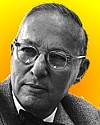
Died 25 Feb 1963 at age 67 (born 10 Sep 1895).
American cultural anthropologist who was noted for having opened up the study of the New World Negro as a new field of research. Herskovits was also known for his humanistic and relativistic writings on culture. Herskovits turned to the study of Anthropology in 1920 in graduate work at Columbia University under Franz Boas. As a teacher at Northwestern University, IL, (1927-63), he founded the first US University Program in African Studies (1951). He advocated cultural relativism in Man and His Works (1948) that all standards of judgment are culture-bound.
American cultural anthropologist who was noted for having opened up the study of the New World Negro as a new field of research. Herskovits was also known for his humanistic and relativistic writings on culture. Herskovits turned to the study of Anthropology in 1920 in graduate work at Columbia University under Franz Boas. As a teacher at Northwestern University, IL, (1927-63), he founded the first US University Program in African Studies (1951). He advocated cultural relativism in Man and His Works (1948) that all standards of judgment are culture-bound.
Melville J. Herskovits (Leaders of modern anthropology series), by George Eaton Simpson. - book suggestion.

Died 25 Feb 1953 at age 96 (born 1 Sep 1856).
Russian microbiologist who helped to establish bacteriology as a major biological science. He was first to isolate the bacteria responsible for nitrification and nitrogen fixation by soil bacteria (1890).Winogradsky also studied bacteria that recycle other vital elements for use by other organisms - including ‘iron bacteria', and those which metabolize sulfur (1887-9) - deriving metabolic energy from inorganic nutrients. Previously, only organic substrates were considered suitable for microbes. The "Winogradsky column" is still used as an enrichment culture that simulates the muddy habitat of anoxygenic photosynthetic bacteria.[Name also spelled Sergei or Sergius.]
Russian microbiologist who helped to establish bacteriology as a major biological science. He was first to isolate the bacteria responsible for nitrification and nitrogen fixation by soil bacteria (1890).Winogradsky also studied bacteria that recycle other vital elements for use by other organisms - including ‘iron bacteria', and those which metabolize sulfur (1887-9) - deriving metabolic energy from inorganic nutrients. Previously, only organic substrates were considered suitable for microbes. The "Winogradsky column" is still used as an enrichment culture that simulates the muddy habitat of anoxygenic photosynthetic bacteria.[Name also spelled Sergei or Sergius.]
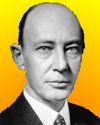
Died 25 Feb 1950 at age 64 (born 2 Dec 1885). quotes
American physician who received (with George Whipple and William Murphy) the Nobel Prize for Physiology or Medicine in 1934 for the introduction of a raw-liver diet to regenerate blood hemoglobin in the treatment of pernicious anemia, which was previously an invariably fatal disease. Later, he helped develop liver extract for oral use (now replaced by vitamin B12 injections). Earlier, during WW I, at the suggestion of Alice Hamilton, pioneer in industrial medicine at Harvard, Minot had investigated the anemia occurring among New Jersey ammunition workers. From studies of their blood, he found that the trinitrotoluene (TNT) used to fill shells acted as a poison, causing destruction of red cells, often producing anemia.
American physician who received (with George Whipple and William Murphy) the Nobel Prize for Physiology or Medicine in 1934 for the introduction of a raw-liver diet to regenerate blood hemoglobin in the treatment of pernicious anemia, which was previously an invariably fatal disease. Later, he helped develop liver extract for oral use (now replaced by vitamin B12 injections). Earlier, during WW I, at the suggestion of Alice Hamilton, pioneer in industrial medicine at Harvard, Minot had investigated the anemia occurring among New Jersey ammunition workers. From studies of their blood, he found that the trinitrotoluene (TNT) used to fill shells acted as a poison, causing destruction of red cells, often producing anemia.
The Inquisitive Physician: The Life and Times of George Richards Minot, by Francis M. Rackemann. - book suggestion.
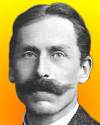
Died 25 Feb 1947 at age 82 (born 22 Jan 1865).
Louis Carl Heinrich Freidrich Paschen was a German physicist who was an outstanding experimental spectroscopist. In 1895, in a detailed study of the spectral series of helium, an element then newly discovered on earth, he showed the identical match with the spectral lines of helium as originally found in the solar spectrum by Janssen and Lockyer nearly 40 years earlier. He is remembered for the Paschen Series of spectral lines of hydrogen which he elucidated in 1908.«
Louis Carl Heinrich Freidrich Paschen was a German physicist who was an outstanding experimental spectroscopist. In 1895, in a detailed study of the spectral series of helium, an element then newly discovered on earth, he showed the identical match with the spectral lines of helium as originally found in the solar spectrum by Janssen and Lockyer nearly 40 years earlier. He is remembered for the Paschen Series of spectral lines of hydrogen which he elucidated in 1908.«
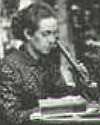
Died 25 Feb 1934 at age 76 (born 9 Jan 1858).
American botanistt known for her lasting contributions to bryology, the study of mosses. She went on numerous botanical expeditions to the West Indies and in wilderness areas of the Adirondacks. A visit to the Royal Botanic Gardens at Kew, near London, England, made a great impression on Britton and she determined that New York City should have its own botanical garden. She was the driving force in the establishment of the New York Botanical Garden in the Bronx. The original 250 acre garden was incorporated in 1891. Through publications, lectures, and correspondence, Britton also raised public interest in conservation issues and promoted legislation for the protection of endangered native plants.
American botanistt known for her lasting contributions to bryology, the study of mosses. She went on numerous botanical expeditions to the West Indies and in wilderness areas of the Adirondacks. A visit to the Royal Botanic Gardens at Kew, near London, England, made a great impression on Britton and she determined that New York City should have its own botanical garden. She was the driving force in the establishment of the New York Botanical Garden in the Bronx. The original 250 acre garden was incorporated in 1891. Through publications, lectures, and correspondence, Britton also raised public interest in conservation issues and promoted legislation for the protection of endangered native plants.
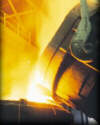
Died 25 Feb 1920 at age 64 (born 11 Oct 1855).
American metallurgist who invented a device to ensure uniform humidity in the air stream going into blast furnaces. With prior experience at several iron works, Gayley was hired by the Edgar Thomson Steel Works as Superintendent of the Blast Furnaces (1885). In this capacity was an economist, and made a record reduction in the coke consumption. He invented the bronze cooling plate for blast furnace walls, the auxiliary casting stand for Bessemer steel plants, and was the first to use the compound condensing blowing engine with the Blast Furnace. He also invented the dry-air blast, for which the Franklin Institute awarded him the Elliott Cresson medal. Gayley rose to first vice-president of the U.S.Steel Corp and acquired a large fortune.
American metallurgist who invented a device to ensure uniform humidity in the air stream going into blast furnaces. With prior experience at several iron works, Gayley was hired by the Edgar Thomson Steel Works as Superintendent of the Blast Furnaces (1885). In this capacity was an economist, and made a record reduction in the coke consumption. He invented the bronze cooling plate for blast furnace walls, the auxiliary casting stand for Bessemer steel plants, and was the first to use the compound condensing blowing engine with the Blast Furnace. He also invented the dry-air blast, for which the Franklin Institute awarded him the Elliott Cresson medal. Gayley rose to first vice-president of the U.S.Steel Corp and acquired a large fortune.
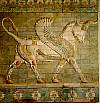
Died 25 Feb 1920 at age 75 (born 3 Aug 1844).
French archaeologist and civil engineer who in 1884-86 undertook major excavations at the ancient site of Susa (modern Shush, Iran) uncovering the palaces of the ancient Persian kings Darius I the Great and Artaxerxes II. He was helped by a French physician at the Persian court to reopen the 1852 excavations done by W.K. Loftus. Dieulafoy's exploration resulted in revealing part of the palace and other structures, and in settling the topographical details of the city. He also recovered unique and beautiful features of art and architecture, including the pillars with capitals of bulls' heads, three great porticoes and the hall of columns, the frieze of lions, and that of archers now in the Louvre.«Image: winged bull glazed bricks from Susa (Louvre).
French archaeologist and civil engineer who in 1884-86 undertook major excavations at the ancient site of Susa (modern Shush, Iran) uncovering the palaces of the ancient Persian kings Darius I the Great and Artaxerxes II. He was helped by a French physician at the Persian court to reopen the 1852 excavations done by W.K. Loftus. Dieulafoy's exploration resulted in revealing part of the palace and other structures, and in settling the topographical details of the city. He also recovered unique and beautiful features of art and architecture, including the pillars with capitals of bulls' heads, three great porticoes and the hall of columns, the frieze of lions, and that of archers now in the Louvre.«Image: winged bull glazed bricks from Susa (Louvre).
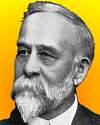
Died 25 Feb 1915 at age 69 (born 21 May 1845).
American botanist who created the first U.S. undergraduate botanical experimental laboratory at Iowa State University, where he held several positions (1870-84) and inaugurated the systematic study of plant morphology in the U.S. He devised a classification of angiosperm (flowering plant) taxa based on Candolle's theory of differentiation to emphasize the evolutionary divergence of primitive forms. He moved to become Dean of Agriculture at the University of Nebraska (1884-1915). While in Nebraska, he started a tree planting experiment (1902) that initiated the Nebraska National Forest, the first man-made national forest in the world. He helped influence federal legislation to preserve the giant sequoia trees in California.«
American botanist who created the first U.S. undergraduate botanical experimental laboratory at Iowa State University, where he held several positions (1870-84) and inaugurated the systematic study of plant morphology in the U.S. He devised a classification of angiosperm (flowering plant) taxa based on Candolle's theory of differentiation to emphasize the evolutionary divergence of primitive forms. He moved to become Dean of Agriculture at the University of Nebraska (1884-1915). While in Nebraska, he started a tree planting experiment (1902) that initiated the Nebraska National Forest, the first man-made national forest in the world. He helped influence federal legislation to preserve the giant sequoia trees in California.«
Science With Practice: Charles E. Bessey and the Maturing of American Botany, by Richard A. Overfield. - book suggestion.
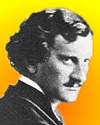
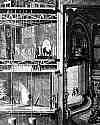
Stacked stages
James Morrison Steele Mackaye was an American dramatist and inventor in theatre design. He studied in Europe. After returning to the U.S. (c.1872), he opened the Madison Square Theatre in 1879, where he created a huge elevator with two stages stacked one on top of the other so that elaborate furnishings could be changed quickly between scenes. He also invented and installed overhead and indirect stage lighting, movable stage wagons, artificial ventilation, and folding seats. MacKaye was the first to light a New York theatre entirely by electricity, the Lyceum, which he founded in 1884. In all, Mackaye patented over 100 inventions, mostly of theatrical equipment, including the disappearing orchestra pit. One of his sons, Benton MacKaye (1879-1975), became a forester, and proposed the establishment of the Appalachian Trail (1921).«
Died 25 Feb 1786 at age 74 (born 22 Sep 1711). quotes
English astronomer whose interest in astronomy began as a youth. He taught himself mathematics. Eventually he schooled sailors in navigation. Wright first speculated our Solar System lay in a vast flat disk of stars (the Milky Way). Further away were the vaguely perceived nebulae that he proposed were their own separate, similar, collections of stars. He conflated these ideas with a religious view of a moral order with a divine center, the abode of God and angels. But he did realize the stars must be in rotation about this center to avoid gravitational collapse. His first major book on these ideas was An Original Theory or New Hypothesis of the Universe (1750). Immanuel Kant expanded on the physical ideas.«
English astronomer whose interest in astronomy began as a youth. He taught himself mathematics. Eventually he schooled sailors in navigation. Wright first speculated our Solar System lay in a vast flat disk of stars (the Milky Way). Further away were the vaguely perceived nebulae that he proposed were their own separate, similar, collections of stars. He conflated these ideas with a religious view of a moral order with a divine center, the abode of God and angels. But he did realize the stars must be in rotation about this center to avoid gravitational collapse. His first major book on these ideas was An Original Theory or New Hypothesis of the Universe (1750). Immanuel Kant expanded on the physical ideas.«
Died 25 Feb 1736 (born c. 26 Dec 1666).
English electrical experimenter and astronomer.
English electrical experimenter and astronomer.
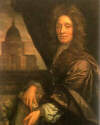
Died 25 Feb 1723 at age 90 (born 20 Oct 1632). quotes
English architect, mathematician and astronomer who was the greatest among the country's architects of his time. While at Wadham College, Oxford (1649), he joined a group of brilliant scholars, who later founded the Royal Society (president 1680-82). Wren learned scientific skills as an assistant to an eminent anatomist. Through astronomy, he developed skills in working models, diagrams and charting that proved useful when he entered architecture. After London's Great Fire of 1666, Wren presented a scheme to rebuild the city, though only partially realized. He designed many buildings including St. Paul's Cathedral and 53 churches. He invented a “weather clock” similar to a modern barometer, new engraving methods, and helped develop a blood transfusion technique. His scientific work was highly regarded by Sir Isaac Newton as stated in the Principia.
English architect, mathematician and astronomer who was the greatest among the country's architects of his time. While at Wadham College, Oxford (1649), he joined a group of brilliant scholars, who later founded the Royal Society (president 1680-82). Wren learned scientific skills as an assistant to an eminent anatomist. Through astronomy, he developed skills in working models, diagrams and charting that proved useful when he entered architecture. After London's Great Fire of 1666, Wren presented a scheme to rebuild the city, though only partially realized. He designed many buildings including St. Paul's Cathedral and 53 churches. He invented a “weather clock” similar to a modern barometer, new engraving methods, and helped develop a blood transfusion technique. His scientific work was highly regarded by Sir Isaac Newton as stated in the Principia.
Sir Christopher Wren; Renaissance architect, philosopher, and scientist, by Heywood Gould. - book suggestion.

In 1952, At Sellafield on the Irish Sea coast in Cumberland, the Windscale plutonium plant began operation. That Britain was developing nuclear weapons was not made public until, a few days earlier, Prime Minister Winston Churchill had announced on 17 Feb 1952, plans to test the first British-made atomic bomb at the Monte Bello Islands off the northwest coast of Australia. There, on 3 Oct 1952, the first British atomic weapons test, called Hurricane, was successfully conducted aboard the frigate HMS Plym.
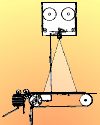
In 1930, the first bank check photographing device patent was issued in the U.S. to its inventor, George Lewis McCarthy, who called it a Checkograph (No. 1,748,489). In 1927, the Eastman Kodak Co., Rochester, NY had commenced its commercial manufacture as the Recordak. The machine photographed checks onto 16mm motion picture film using a conveyor belt before they were returned to customers. It was subsequently developed to use 35mm film and also used in libraries for the purpose of making microfilm records, beginning with the New York Public Library (1935) photographing the New York Times of the WWI period. This solved difficulties in archive storage and use of newspapers, and the rapid deterioration of the newsprint original.
In 1927, a conversation between parties in San Francisco, California and London established a new telephone long distance record of 7,287 miles.
In 1908, the Hudson River railway tunnel opened, and commuters began travelling between Manhattan and Hoboken in just ten minutes.
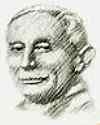
In 1902, (?) the first power-driven vacuum cleaner was built by Hubert Cecil Booth (1871-1955) of London, England. In 1901, Booth, devised a filter bag system that made commercial vacuum cleaners practical. A vacuum cleaner pump driven by a petrol or electric motor, sucked air through fabric which caught the dust. Though effective, Booth's machines were so bulky, they required two workers to operate them, one to maneuver the refrigerator-sized vacuum chamber and another to wield the suction hose. An early use of Booth's machine was to clean the great blue coronation carpet under the throne at Westminster Abbey for the coronation of Edward VII. (30 Aug 1901, U.K. patent number 17,433)
In 1899, the first petrol-fuelled car crash in which the driver died occurred at Grove Hill Harrow, England. The car, a Daimler Wagonette, was being demonstrated by Mr Sewell to Major James Richer, Department Head at the Army & Navy Stores, as a possible purchase for the company. Mr Sewell, the driver, was killed on the spot. When the passenger, Major Richer, died four days later without regaining consciousness, he became Britain's first passenger whose death resulted from a car crash. About a year earlier, on 12 Feb 1898, Henry Lindfield lost control of an electrically-driven vehicle and was the first person to die as a result of a car crash.
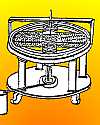
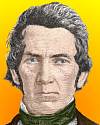
Davenport
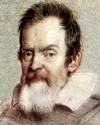
In 1616, the Minutes of the Inquisition recorded that following the judgment by the Farher Theologians against the opinions of the mathematician Galileo on the heliocentric model, Pope Paul V ordered Cardinal Bellarmine to summon Galileo and in person, warn him to abandon his assertion that the earth moves around the sun. If Galileo were to refuse, an injunction would be issued that he should abstain completely from teaching, defending or discussing the doctrine. Further, if Galileo should not acquiesce, he would be imprisoned. The next day, 26 Feb 1616, Galileo was ordered by Bellarmine “to give up altogether the false doctrine... and if you should refuse.. you should be imprisoned.” Given such a choice, Galileo made a renouncement, but he knew that would not change the real facts of the Earth's motion.«
Galileo: A Life, by James Reston. - book suggestion.




